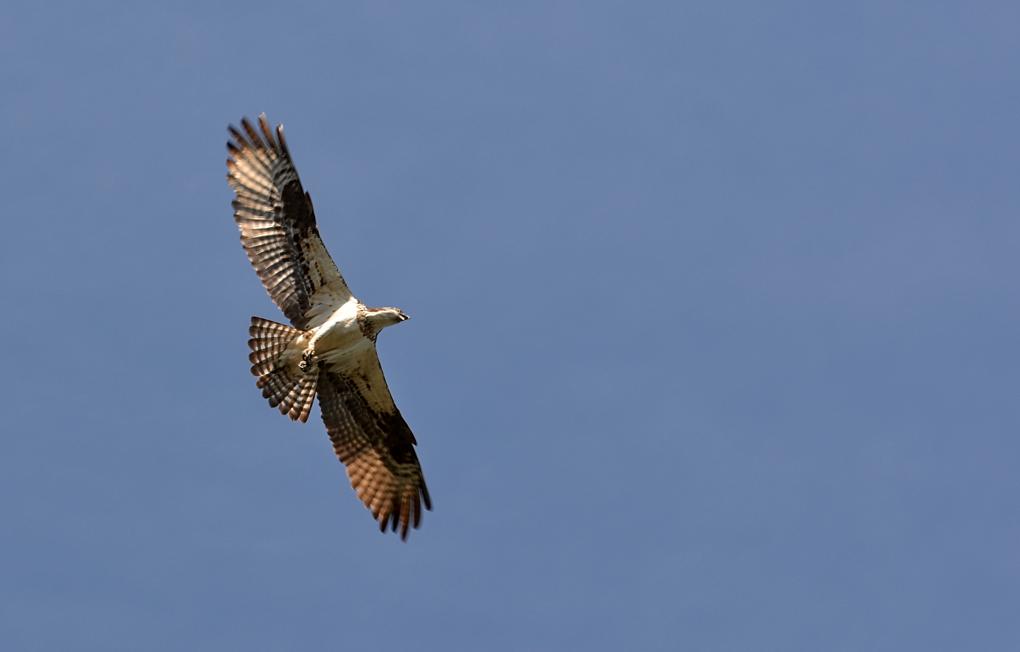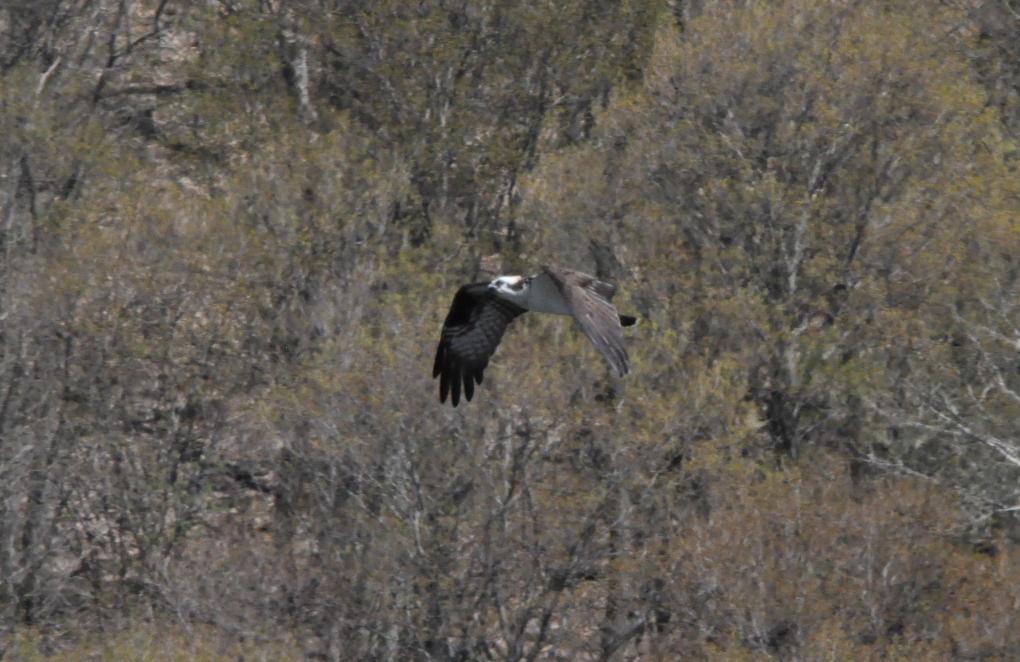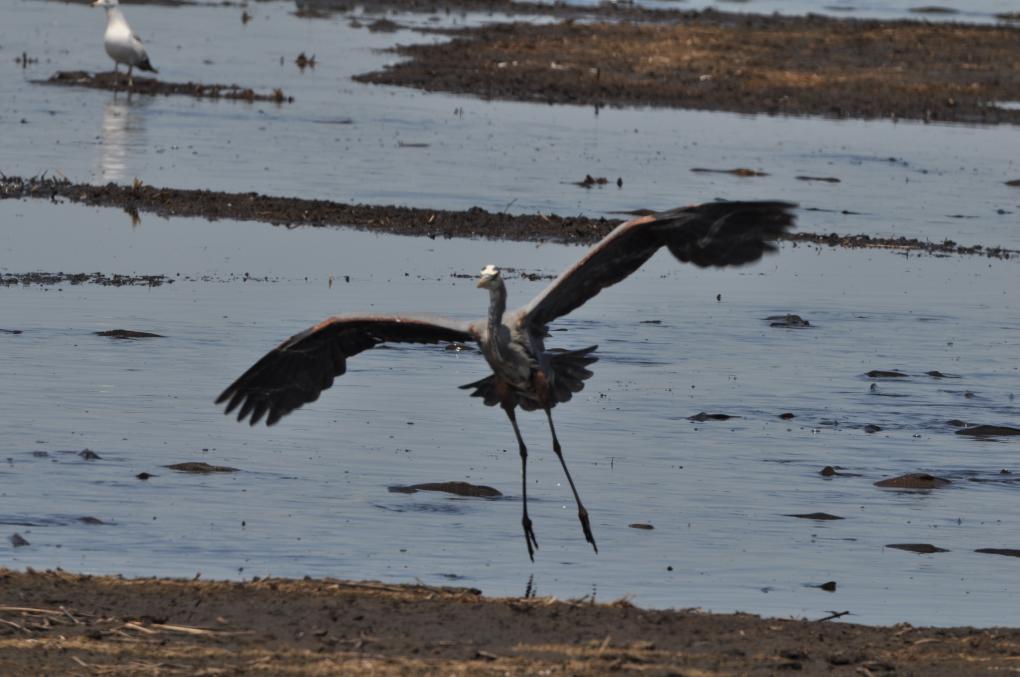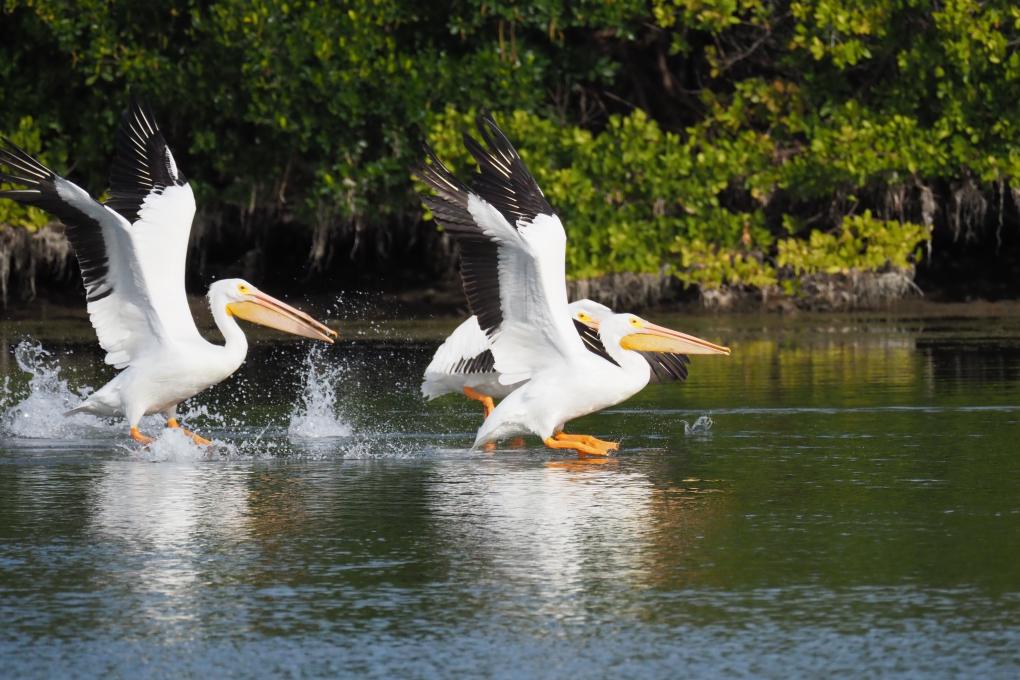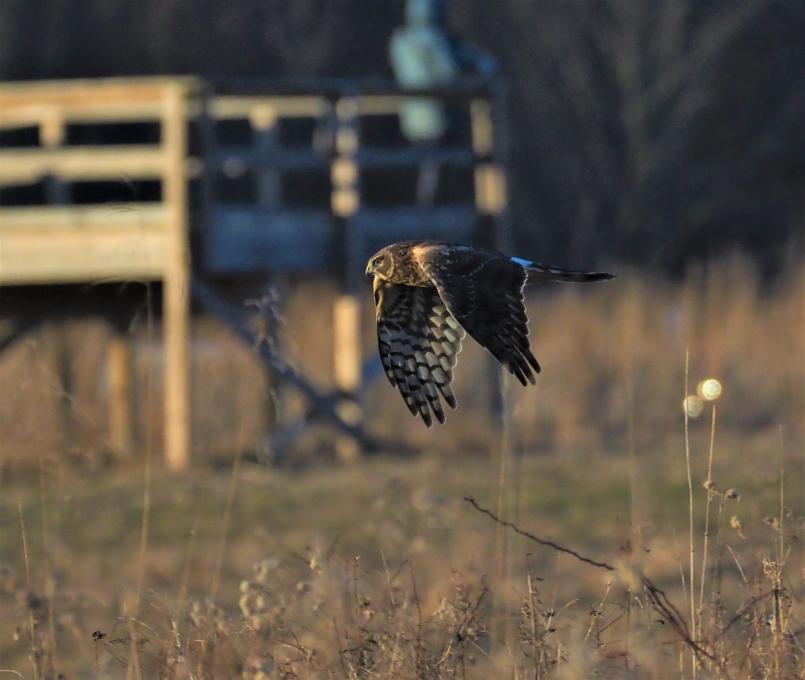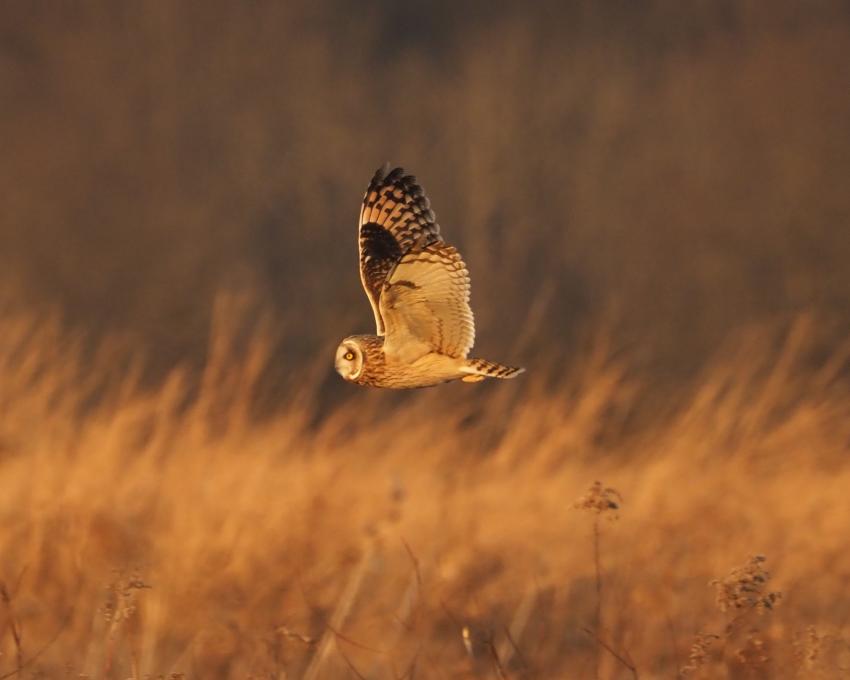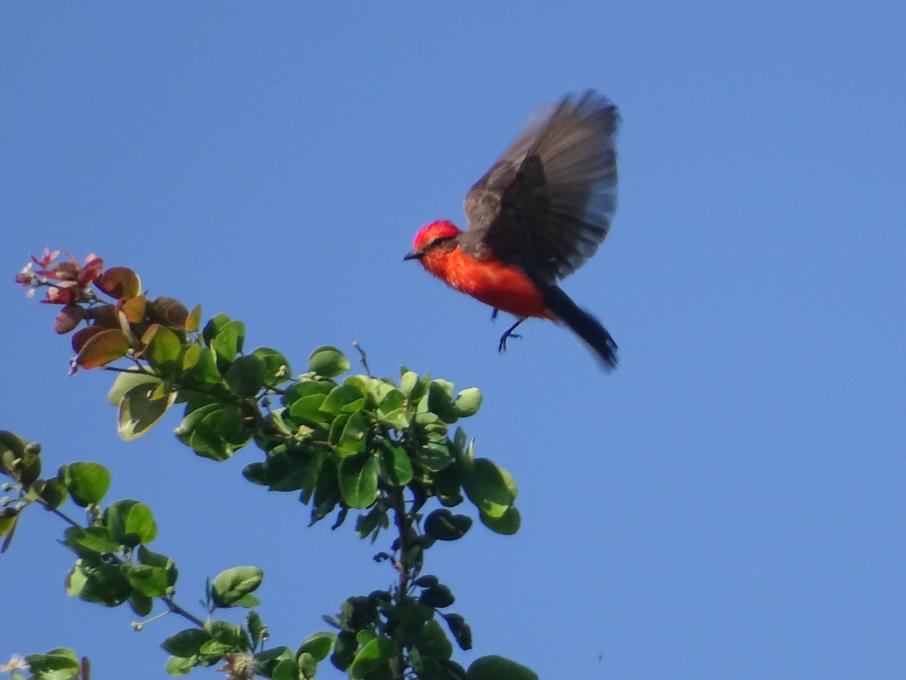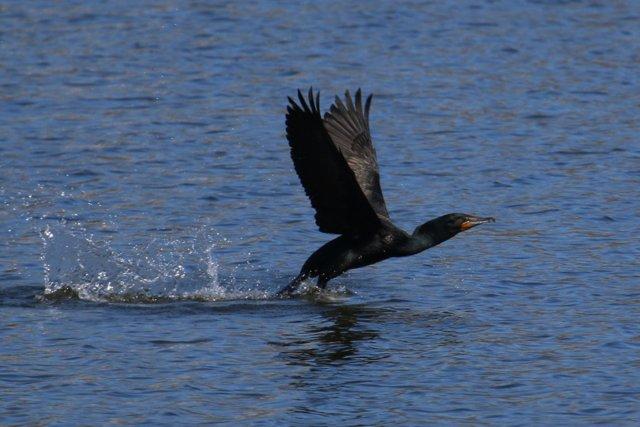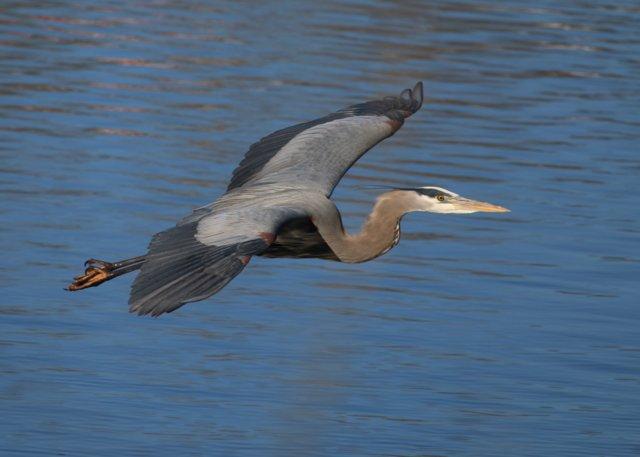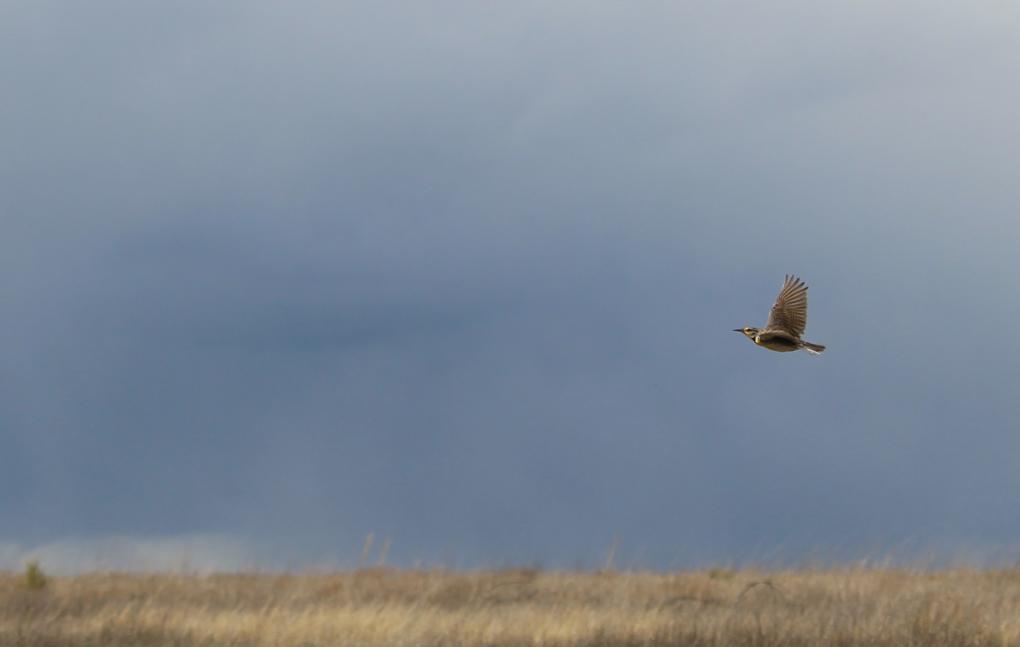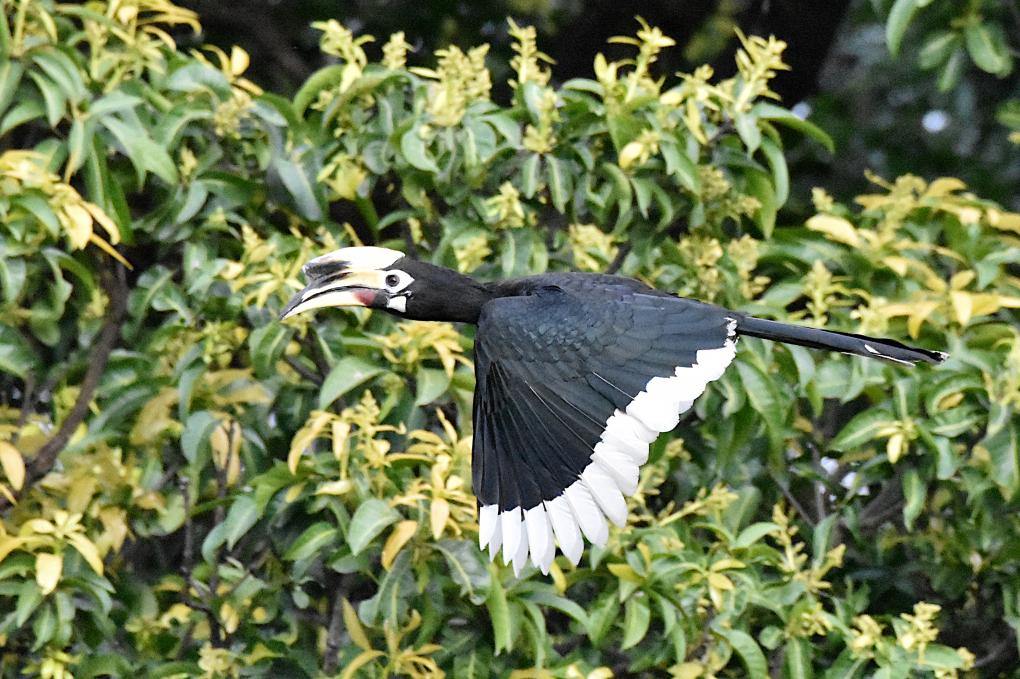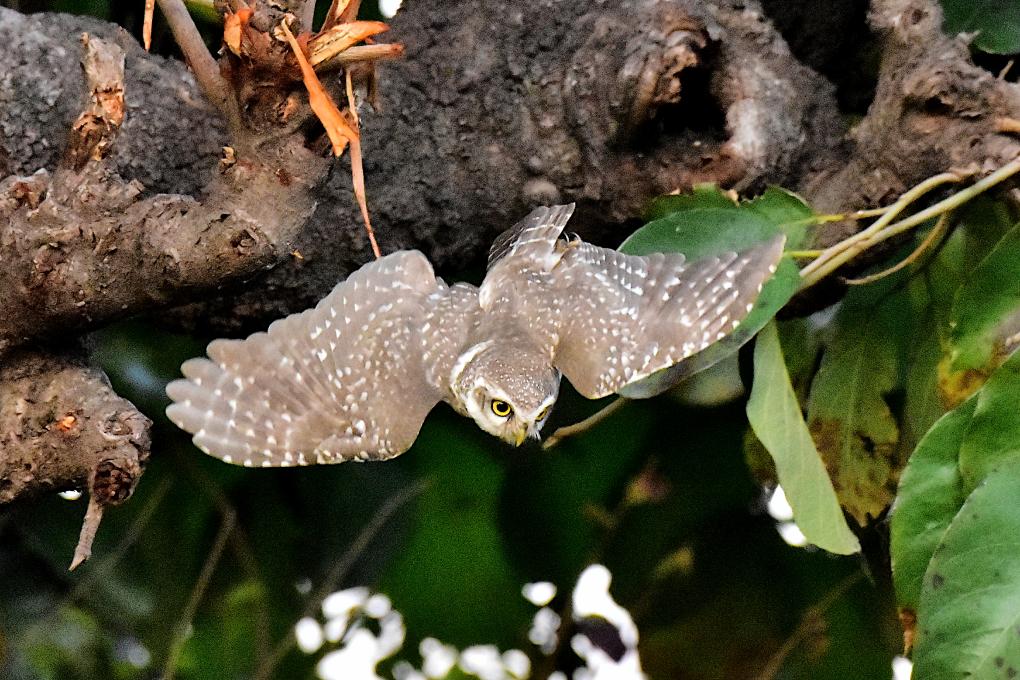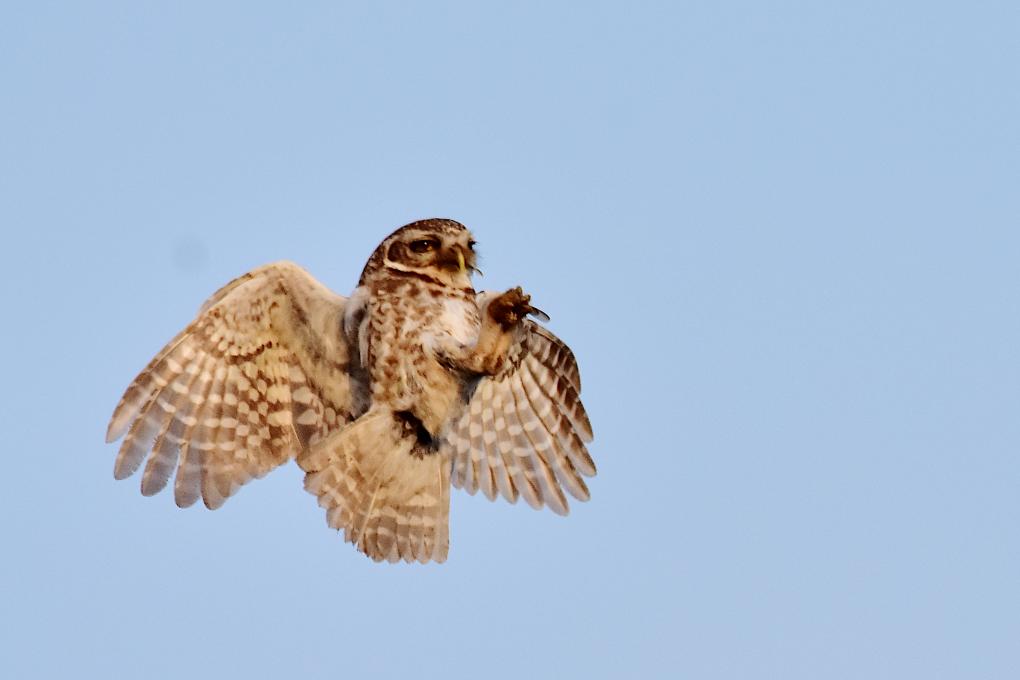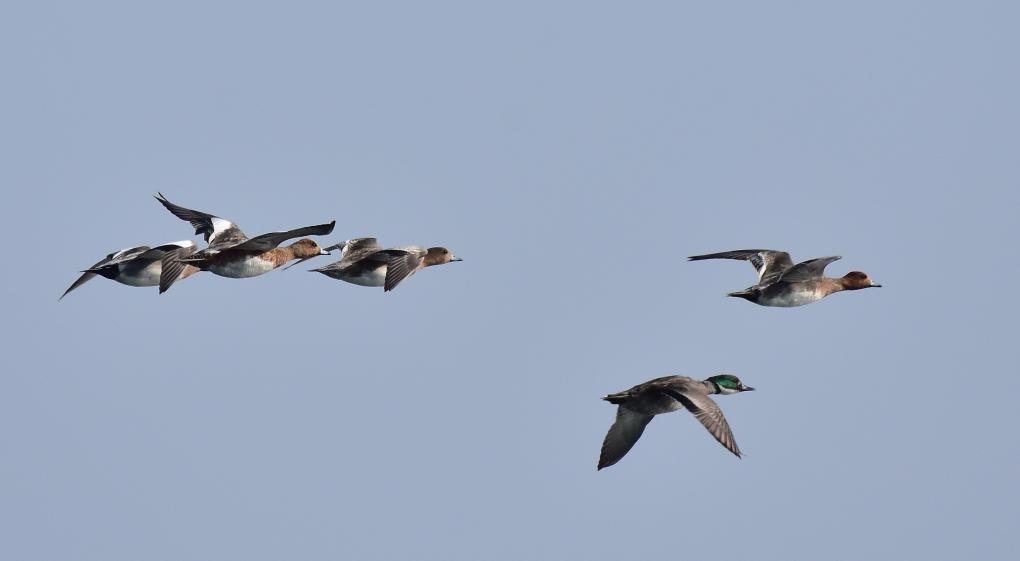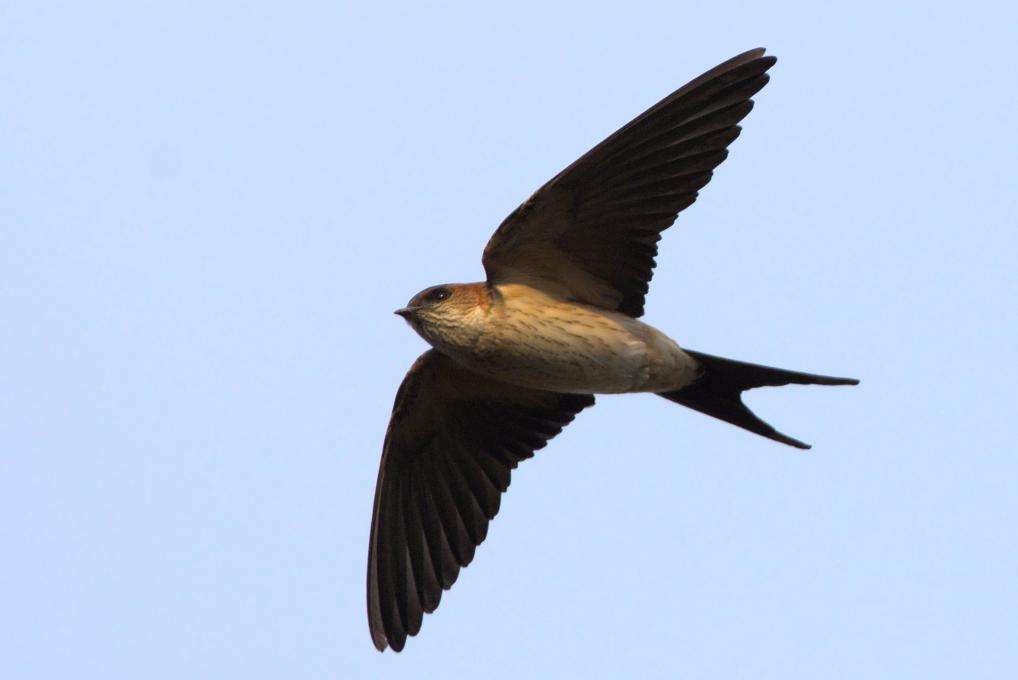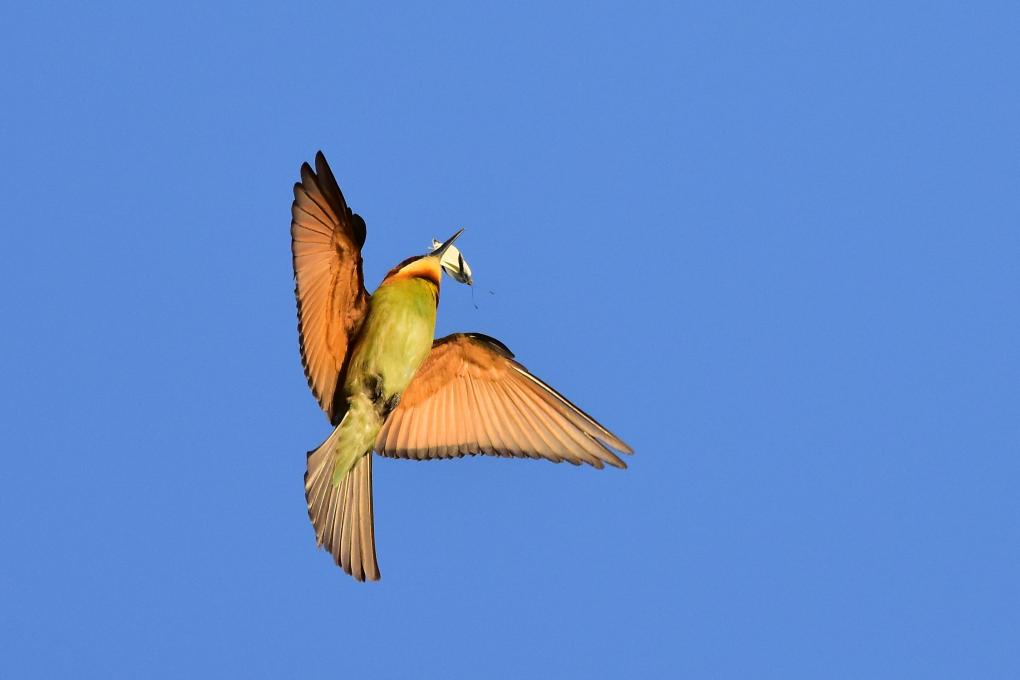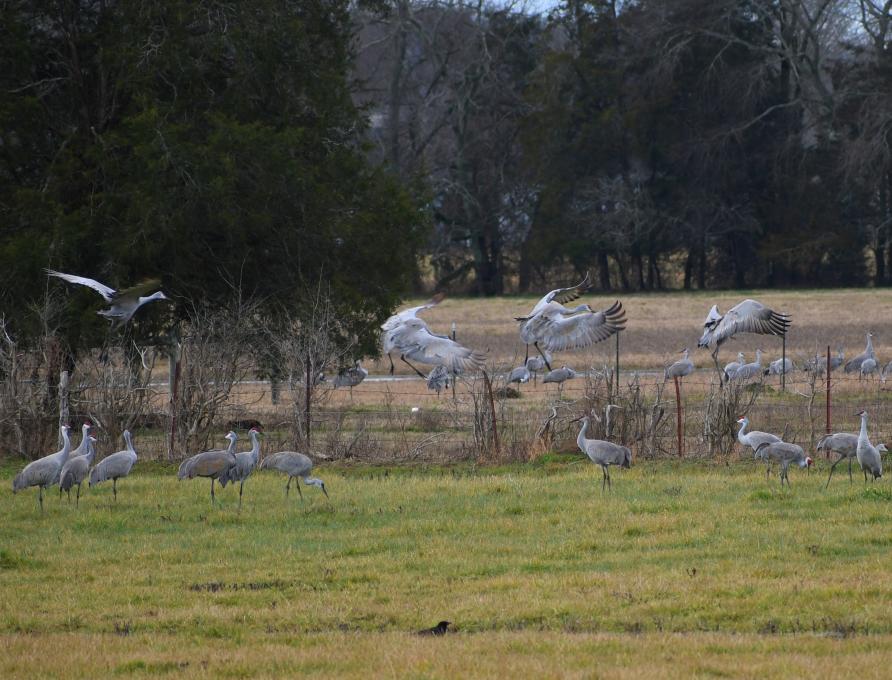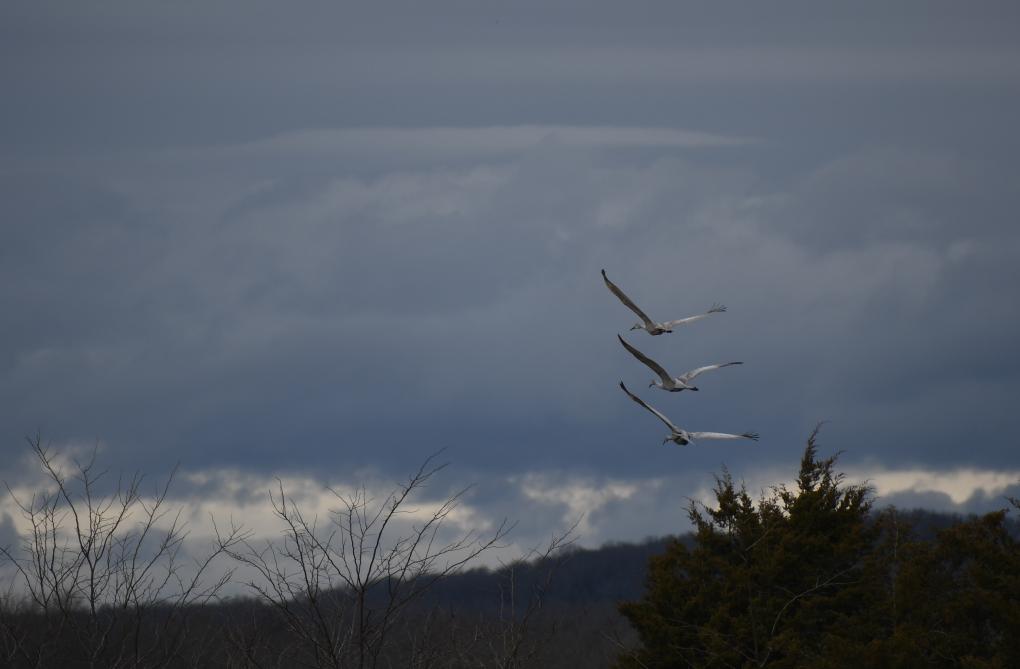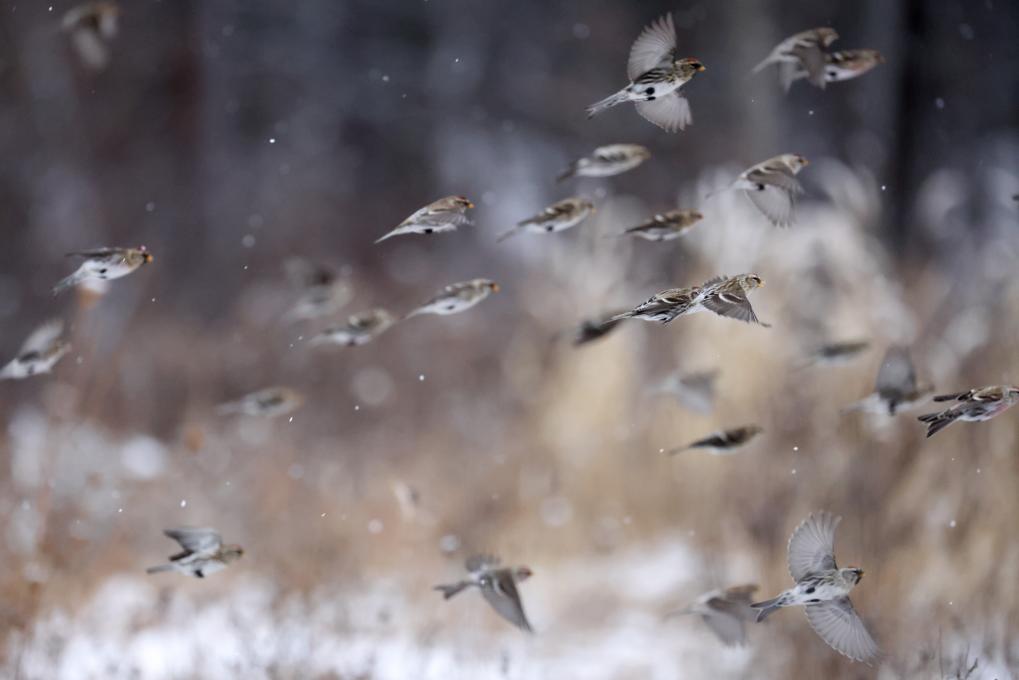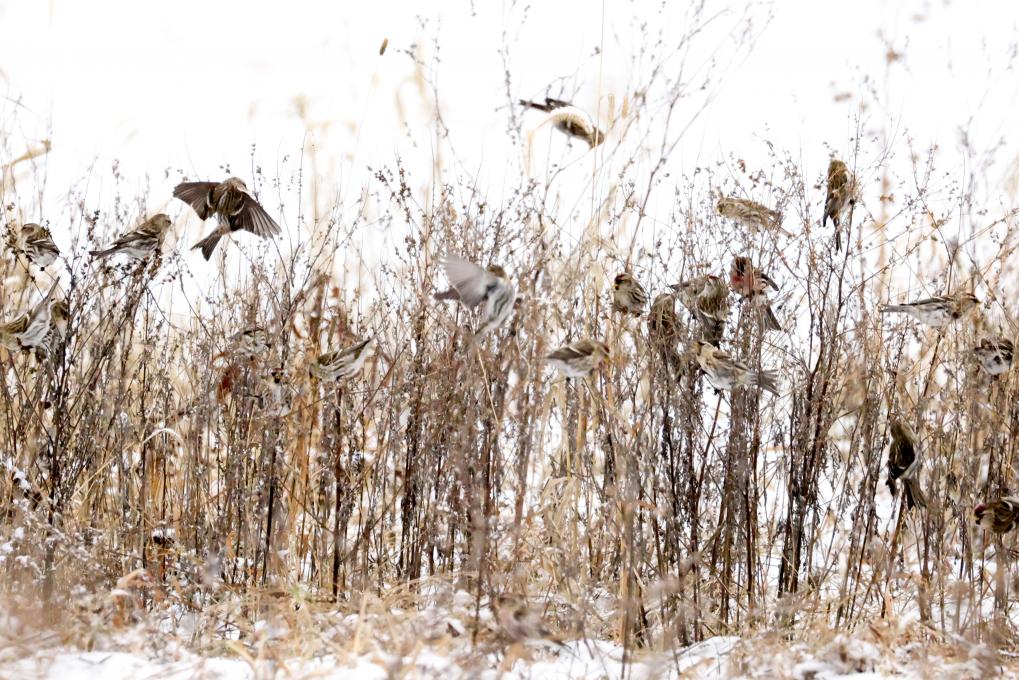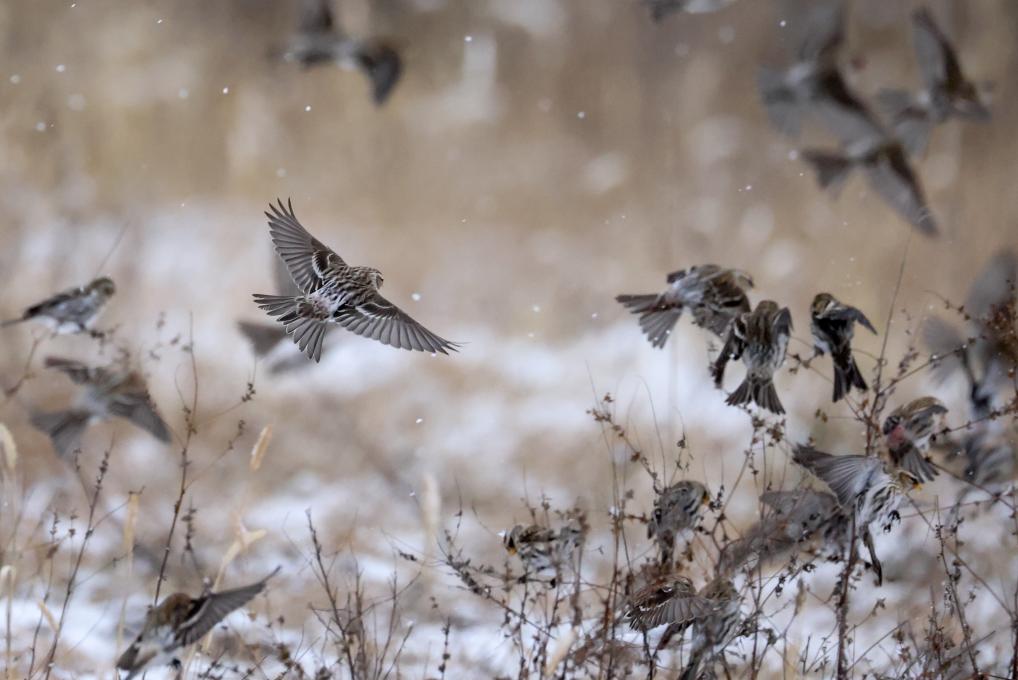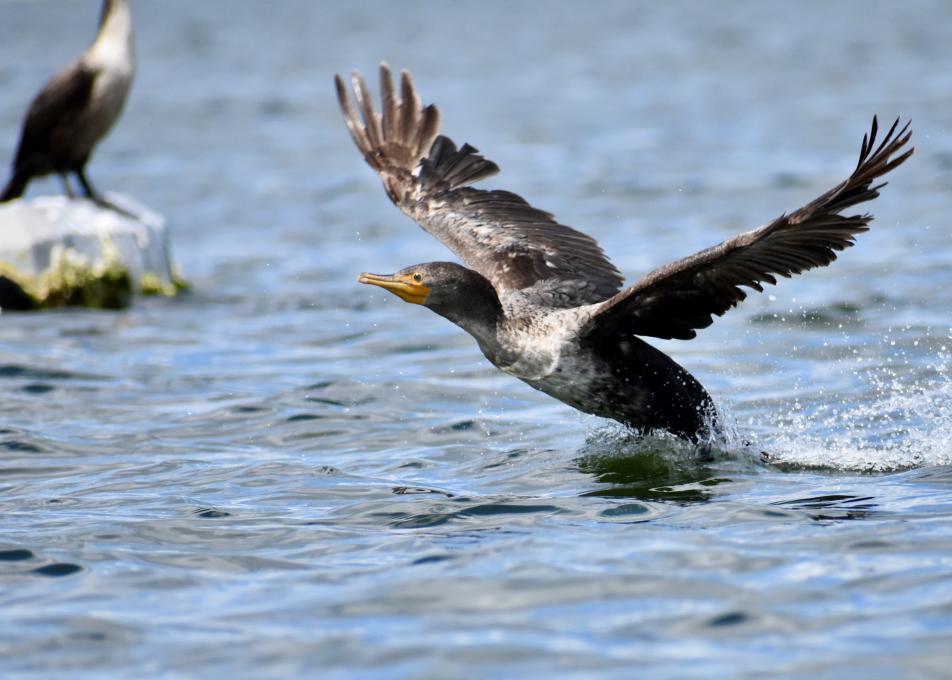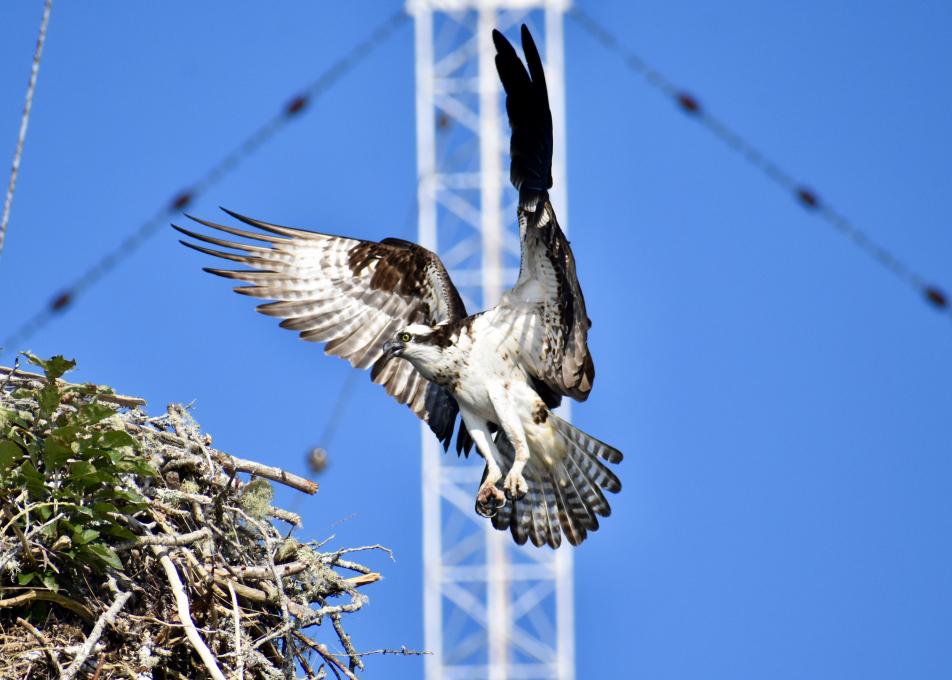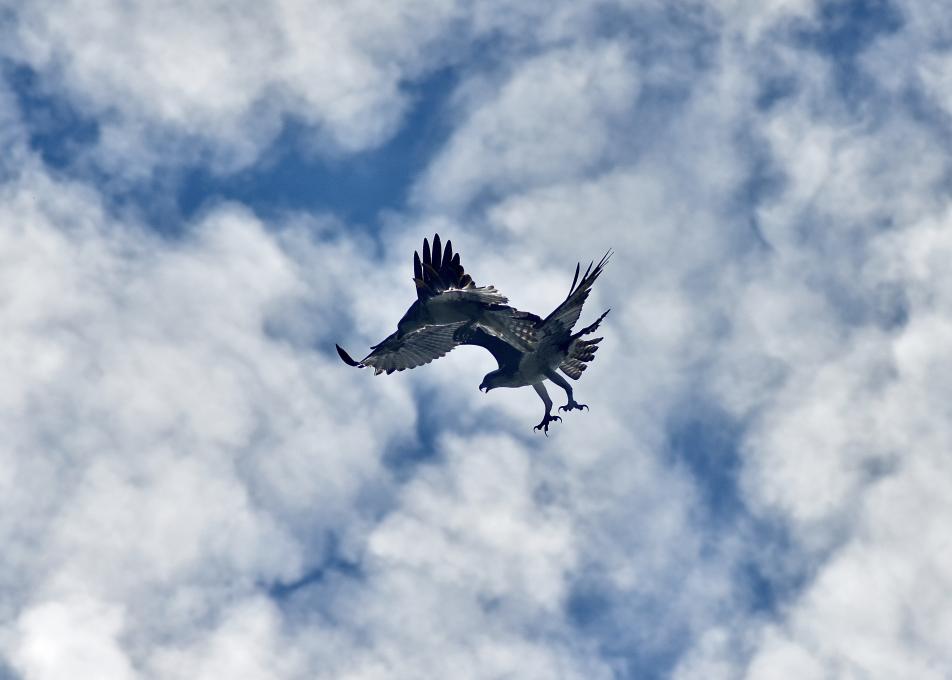The Cornell Lab Bird Academy › Discussion Groups › Bird Photography with Melissa Groo › Practice Capturing Birds in Flight
-
This White banded Kingfisher was fishing in a nearby pond when after multiple tries I got this shot. Front and side lit with pleasing details of the wings. Left space in the direction of flight and positioned picture in the left upper third of the frame. Wish I didn't have the cluttered wooded background but it shows its habitat.

-
Tried to take pictures of backlit Seagulls and this is the best I could come up with. The eye could have been sharper. Its so hard to focus and get a sharp image-practicing,
 practicing and practicing.
practicing and practicing. -
I share this photograph of Short-eared Owl in Colombia.

-
First, an osprey I lucked into. I like how he seems to be eyeing me. Then a Snowy egret--there was some dispute as to whether this was an immature little blue or a snowy, so I wanted to get a shot of the wingtips. Finally, a stilt sandpiper taken at some distance and severely cropped. Still, decent detail. All taken before I received the gift of this course. But a satisfying shot. Can't wait to get out to apply some of what I've learned!



-
 While unintentional at the time, I really was drawn to how oblivious the grounded pelicans were to their incoming colleague. I also liked the multiple angles that the beaks were displayed as part of preening. This is a cropped version of the broader picture. It was a single exposure actually. Two things I would do differently is 1)to shoot in continuous mode to perhaps get the bill in a slightly less overlap-with-body position and 2)use a slighly smaller aperature to get a greater depth of field so that focus is a bit sharper for more of the bird(s). Shot with a 200-500mm Nikon zoom.
While unintentional at the time, I really was drawn to how oblivious the grounded pelicans were to their incoming colleague. I also liked the multiple angles that the beaks were displayed as part of preening. This is a cropped version of the broader picture. It was a single exposure actually. Two things I would do differently is 1)to shoot in continuous mode to perhaps get the bill in a slightly less overlap-with-body position and 2)use a slighly smaller aperature to get a greater depth of field so that focus is a bit sharper for more of the bird(s). Shot with a 200-500mm Nikon zoom. -
Capturing good photos of birds in flight is just as challenging as promised! I’ve been feeling the limitations of my gear with this lesson in particular, but the practice is worthwhile. There was a realization for me that you just constantly have to be shooting, and you don’t really know if you got a good shot until after the fact. A couple of my shots below: 1) An Allen’s Hummingbird while feeding. Despite their speed, I’ve found hummingbirds are a good opportunity for BIF shots since they’re so often in flight and hover, as opposed to other birds that fly in bursts that can be harder to predict. 2) I’ve found a lake where there are almost always swallows flying over the water. These birds feel like the hardest level setting with the way they zip around over the surface of the water! My gear makes it almost impossible to get a bird standing out from a creamy out-of-focus background in these circumstances, and the overcast day made my shot extremely dark. But I’m happy to have captured this moment where the Barn Swallow’s wing touched the water.


-
What a perfectly posed hummingbird <3
-
-

 A couple of weeks ago, I visited letchworth state park in NY. Early one morning I went out, and there were a bunch of turkey vultures flying around near the dam. So, I figured, let me practice taking shots of them in flight. Since they glide on the wind most of the time, they are not too difficult to follow with the camera, as opposed to hummingbirds, which I tried capturing in flight yesterday. I think the photos came out pretty good, but could definitely be better. Photographing birds in flight is difficult, since you have to follow them with your camera, and also make sure the settings you want are correct to as you are moving around the landscape.
A couple of weeks ago, I visited letchworth state park in NY. Early one morning I went out, and there were a bunch of turkey vultures flying around near the dam. So, I figured, let me practice taking shots of them in flight. Since they glide on the wind most of the time, they are not too difficult to follow with the camera, as opposed to hummingbirds, which I tried capturing in flight yesterday. I think the photos came out pretty good, but could definitely be better. Photographing birds in flight is difficult, since you have to follow them with your camera, and also make sure the settings you want are correct to as you are moving around the landscape. -
 Female Cinnamon Teal coming in for a landing.
Female Cinnamon Teal coming in for a landing. -
Beautiful shot with the reflection!
-
-

-
All of the the images shared here are from earlier in the season. I am spending more time observing birds these days and even tend to leave the camera at home recently in favor of the spotting scope. Hope to grab better versions of these images next season. The first 3 images are with a DSLR. A mirrorless camera with Auto eye AF simplifies birds in flight photography by tracking the birds eye automatically when the conditions are right. 1) Black bellied whistling duck. 2) Magnificent frigate birds. Not a very clear image and the birds were a fair distance away. This is a crop from a 1200mm (600 with 2x extender) image from a full frame sensor. These birds usually glide majestically over the water with barely a wing beat. When I observed both these birds performing high speed maneuvers, I took a few pictures. 3) Neotropic cormorant about to land. Again not a critically sharp image but it is a cool image.



-
no. 1) you really nailed it, with everything she said to strive for! no. 2) a really elegant, beautiful composition
-
-
I did two things - spent the afternoon trying to calibrate my shutter speed and aperture to catch bananaquits and swallow tailed hummers flying up to our balcony feeder, and the next day spent the morning at the beach. I went to my brown booby sit spot.. and found only gulls. I'm really grateful for the pointers and the prompt to practice because this is HARD. My success rate was ~1%, lots of swings and misses. I'm going to keep trying because I really want to get some good hawk and macaw in flight photos next year. Hummer fail - so close and I was so bummed because it would have been a cool shot had I not missed part of the beak. Gull in flight. Magnificent frigatebird (f) making great shapes.



-

-


 I enjoyed the video this lesson and went out and tried to capture some birds in flight. Here are a few. I think the Kinglet looks like a tiny football!
I enjoyed the video this lesson and went out and tried to capture some birds in flight. Here are a few. I think the Kinglet looks like a tiny football! -
Your picture of the kinglet is so precious! Tiny football indeed!
-
-
Uh-oh, here's my Brown Pelican in flight. Melissa warned against shots with the bird's bill merging visually with the wing, and here the bill is right in front of the wing. It is visually distinct, though, and it has more dynamism than the other 50 photos I took.
 Next are the sandhill cranes, my attempt at panning in flight. I only had a few chances with this pair, and the speed here was 1/200 sec, not a deep pan of 1/30 sec. So the background isn't as streaked as it ought to be, and the wings are in the pancake position. Oh well, the birds look good and I like it anyway.
Next are the sandhill cranes, my attempt at panning in flight. I only had a few chances with this pair, and the speed here was 1/200 sec, not a deep pan of 1/30 sec. So the background isn't as streaked as it ought to be, and the wings are in the pancake position. Oh well, the birds look good and I like it anyway. Lastly, there's this osprey named Rachel, and she's not a happy bird, because a certified bird bander has got her young'uns. He gave them back a few minutes later, with jewelry attached. I didn't use a fast enough shutter speed here, but hey, it was before I took this course!
Lastly, there's this osprey named Rachel, and she's not a happy bird, because a certified bird bander has got her young'uns. He gave them back a few minutes later, with jewelry attached. I didn't use a fast enough shutter speed here, but hey, it was before I took this course!
-

-
I find that I was just really trying to be patient, but other birds could be distracting. Photographing the great blue heron was a shot I was waiting for. I wasn't to happy that I was to far away I could of had better detail. I have to learn my settings on my camera a little better.

-
It's not easy! I have winter photo's of Short-eared Owls and Northern Harriers. I'm positioned with the sun at my back, but these Owls typically come out late in the afternoon, so the "window for sunshine" is short. With the sun still out, and at a shutter speed in the range of 2,000 to 2,500, I have gotten decent shots, IF, I can also "lead" the bird successfully with my camera. I choose a small area focus, as a point focus is too difficult for me to be successful. Perhaps my best shot was of three White Pelicans taking off. I had a speed of 5,000 set for that shot.



-
Aun no tengo una cámara profesional, estoy practicando con una cámara básica canon, es complicado poder captar una fotografía de aves en vuelo ,sin embrago seguiremos intentando. les comparto mi primer intento

-
I think the 1/1250 shutter speed was key to make this image of a Neotropic Cormorant taking off work. The sharpness of the water behind adds to the feeling of capturing a single moment. The Great Blue Heron was just nicely lit by the evening sun.


-
I've always liked this shot I took before taking this course of a flying western meadowlark. I now see that it has some of the elements Melissa says are characteristic of "classic" photos of birds in flight: creamy bands of color in the background, distinctly up wing position, and plenty of space for the bird to fly into. Looks like it may have been back or side lit? Looking forward to trying to get sharper focus, catch light on the eye, working with the sun and wind behind me, and trying to capture interesting behaviors. I like the stoic "stillness" of this shot but will be fun to explore different creative approaches and trying to capture more dynamic images too.

-
Some more...



-
Here are some which I clicked before taking this course. I am sure I will improve a lot and my next batch will have stunning flight photos. The Red-rumped Swallow was and is most difficult for me because of its highly unpredictable flight



-
Making decisions about and changing settings quickly is very difficult for me. I'm too worried that I will miss the shot even recognizing that studying the bird behavior, the shot will likely make itself available again. As a recent convert to DSLR from bridge, I have tried to carefully select the settings best for birding from a variety of sources, including here, and maintain them in a spreadsheet then use the capability of the camera to store those settings allowing me to shift between them as a group. For example, yesterday while photographing Sandhill Cranes individually, a group flew overhead that I wanted capture. There wasn't enough time to consider focus points, background, etc., in the quick change. And I need a longer lens. I do believe that as you have said, practice will make a difference in my skill level, confidence, and patience. These pictures help you see the transition difficulties I describe.


-
I find flocks challenging and rewarding. This was a flock of common redpolls on a vacant lot. Overcast with a bit of snow. Freezing the action does not permit much depth of field, but less speed resulted in blur. The birds move often and together. Using the car as a hide, I watched and shot for 45 minutes. The flight pattern is probably meant to throw off predators, but is also makes it difficult to take a comprehensive shot. The first photo was typical. The second and third shots were lucky as such opportunities were fleeting. Taken with 400 mm at 1/2000 sec using ISO 5000.



-
I like your last photo of the little guy with outstretched wings and snow falling!
-
-
Practicing!



Read More:
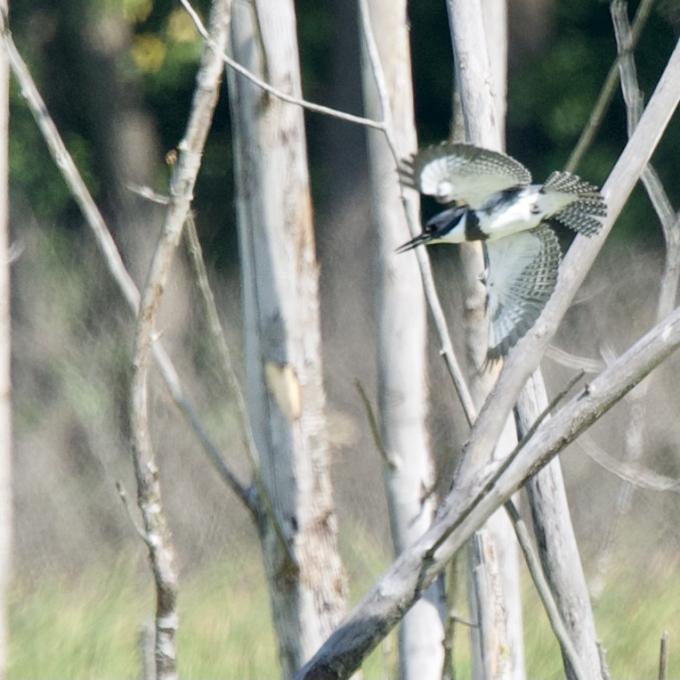
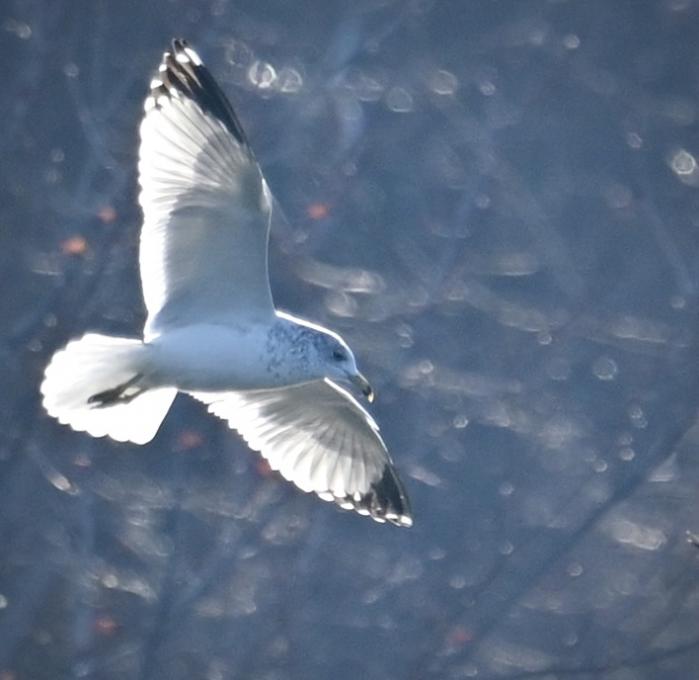 practicing and practicing.
practicing and practicing. 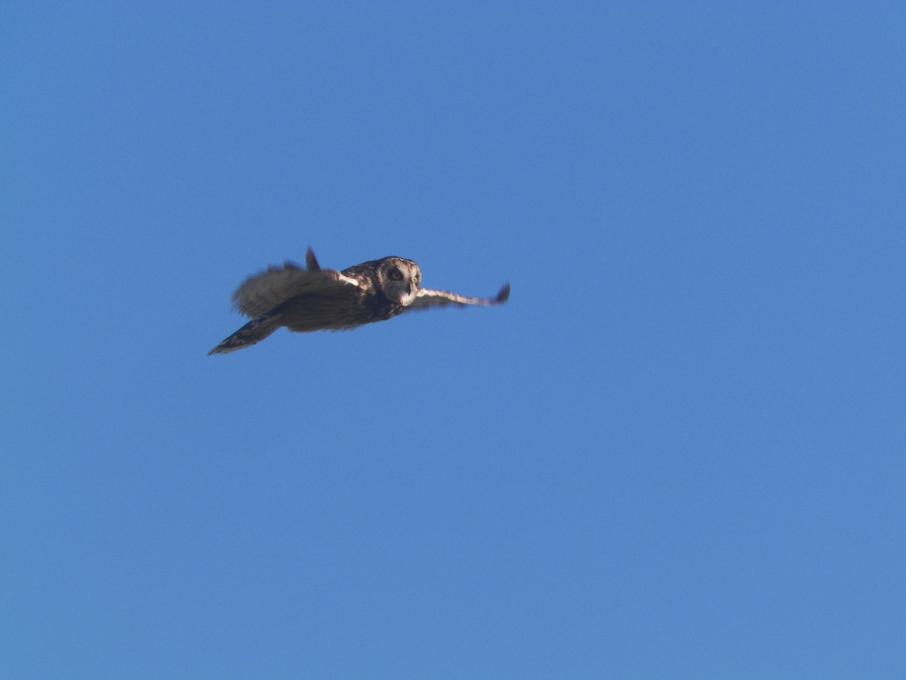
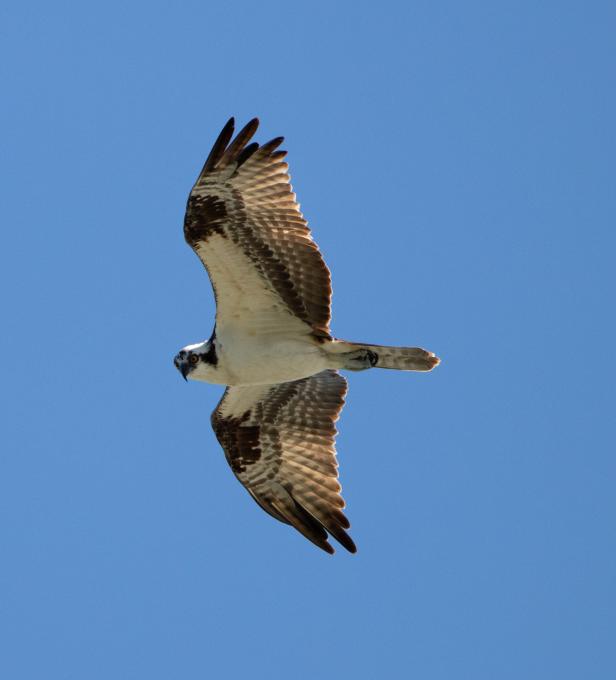
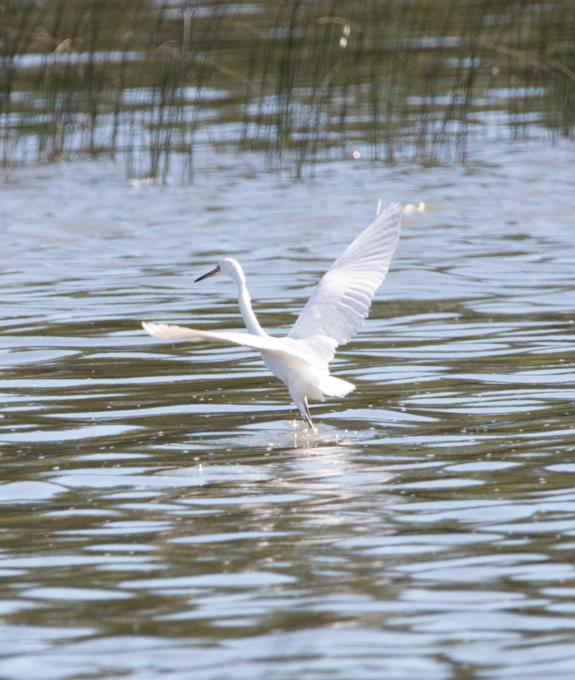
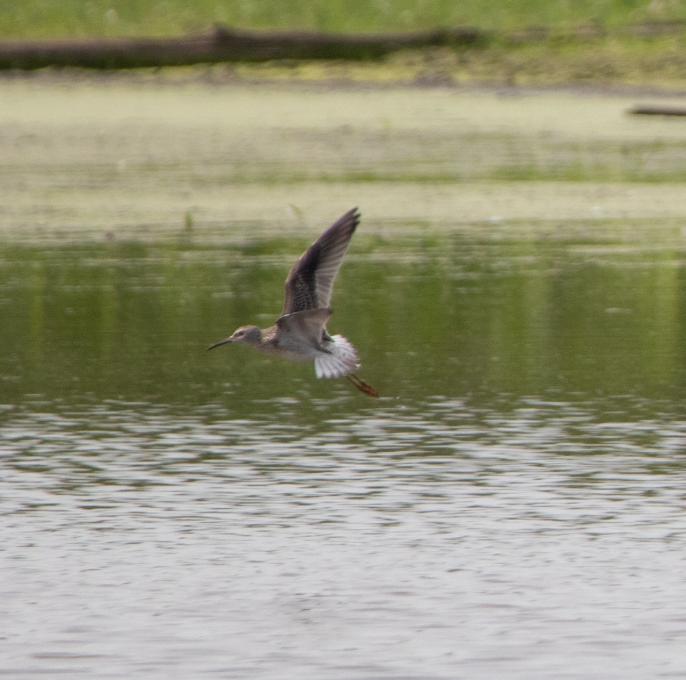
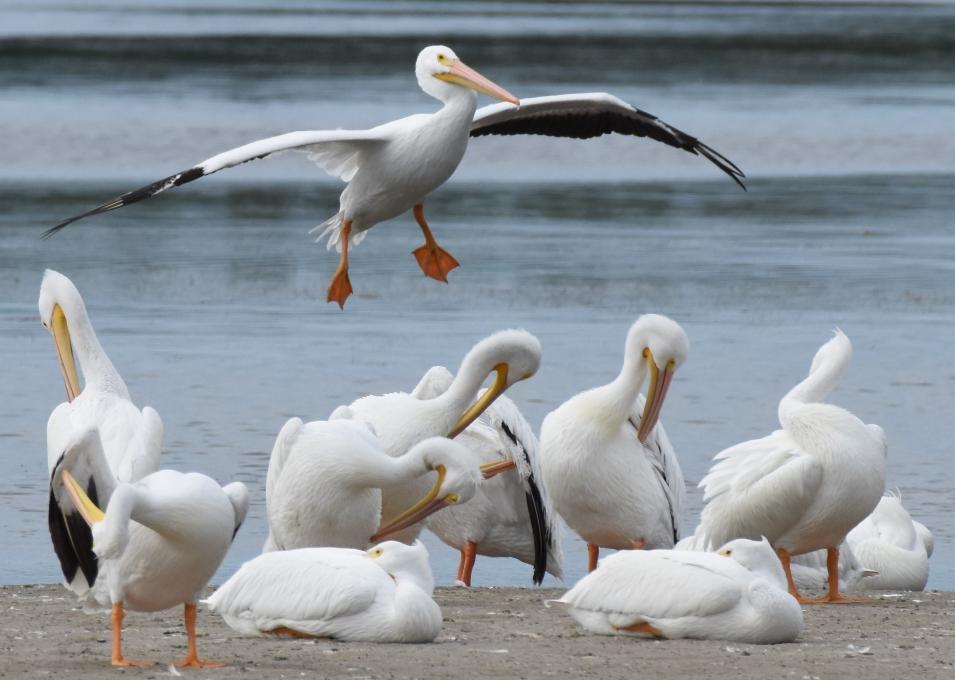 While unintentional at the time, I really was drawn to how oblivious the grounded pelicans were to their incoming colleague. I also liked the multiple angles that the beaks were displayed as part of preening. This is a cropped version of the broader picture. It was a single exposure actually. Two things I would do differently is 1)to shoot in continuous mode to perhaps get the bill in a slightly less overlap-with-body position and 2)use a slighly smaller aperature to get a greater depth of field so that focus is a bit sharper for more of the bird(s). Shot with a 200-500mm Nikon zoom.
While unintentional at the time, I really was drawn to how oblivious the grounded pelicans were to their incoming colleague. I also liked the multiple angles that the beaks were displayed as part of preening. This is a cropped version of the broader picture. It was a single exposure actually. Two things I would do differently is 1)to shoot in continuous mode to perhaps get the bill in a slightly less overlap-with-body position and 2)use a slighly smaller aperature to get a greater depth of field so that focus is a bit sharper for more of the bird(s). Shot with a 200-500mm Nikon zoom. 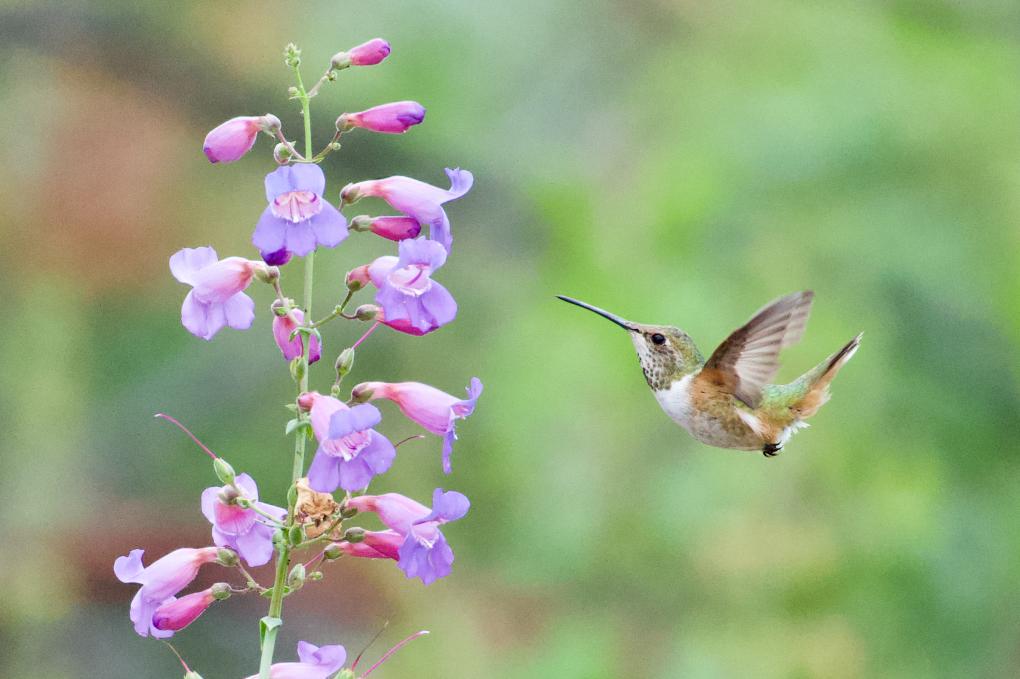
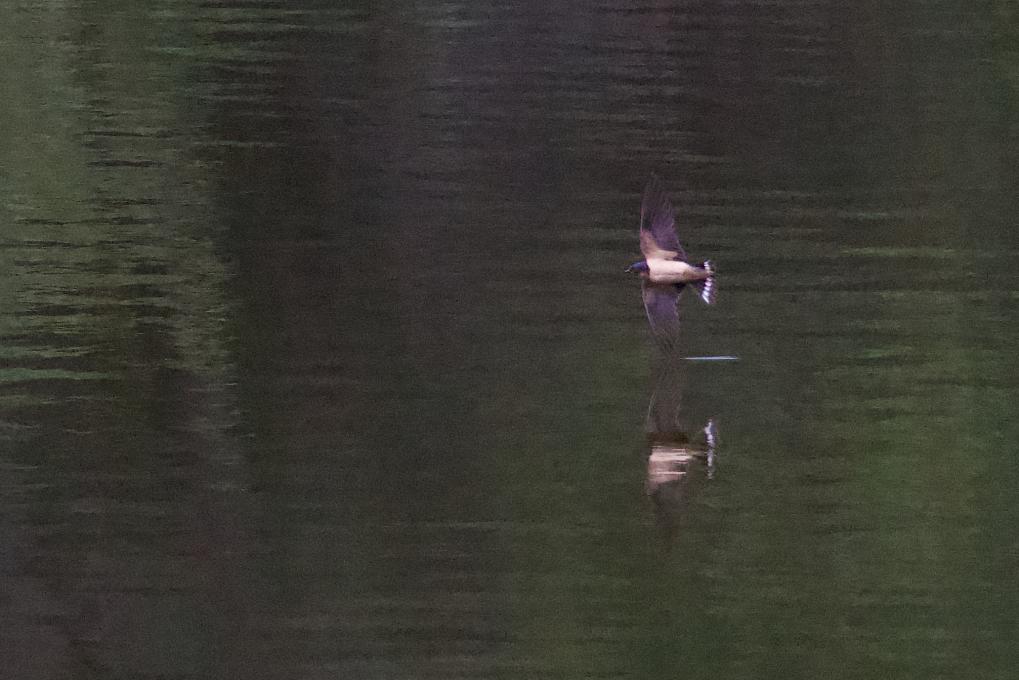
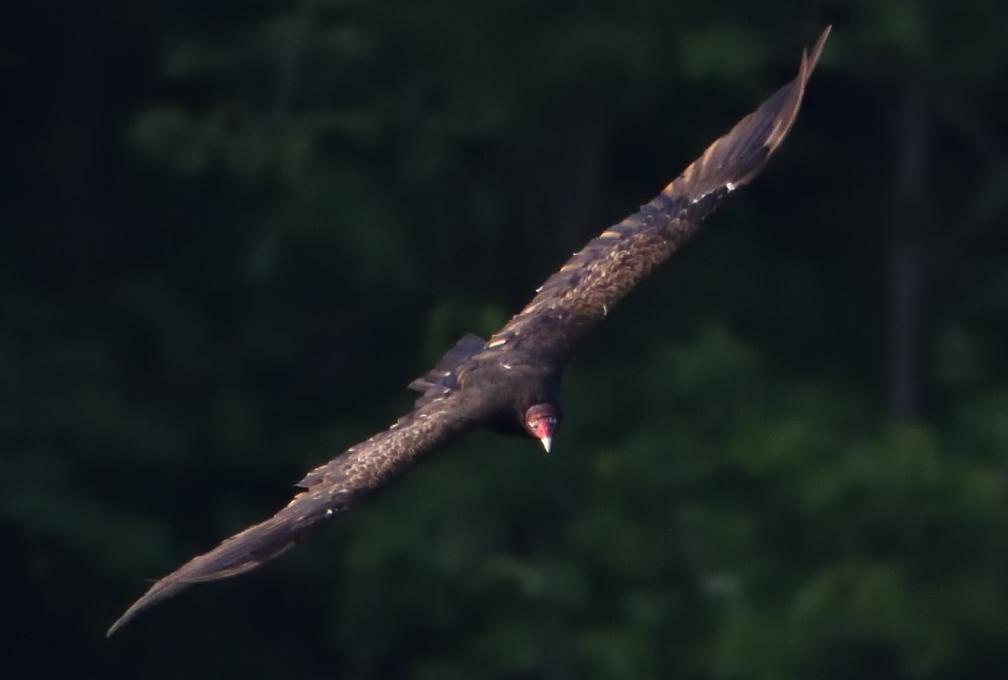
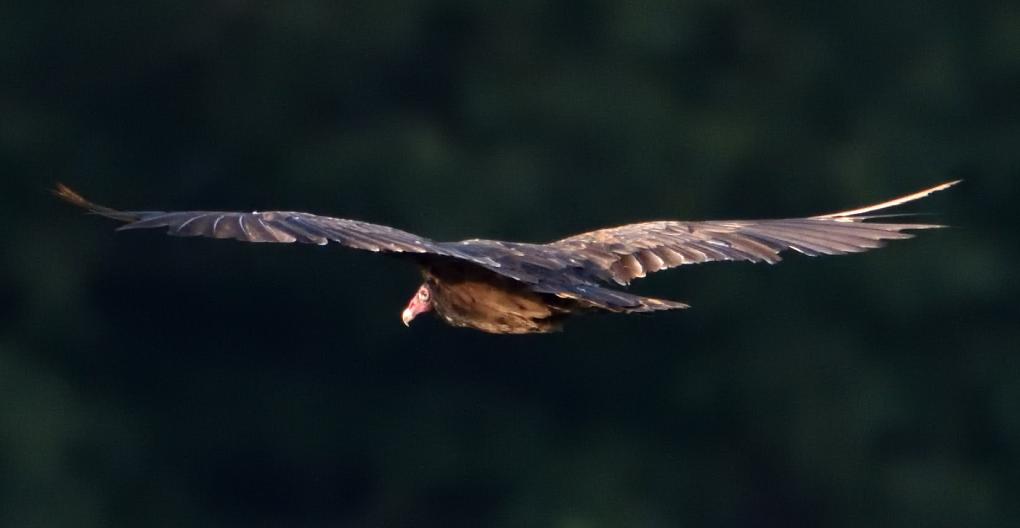 A couple of weeks ago, I visited letchworth state park in NY. Early one morning I went out, and there were a bunch of turkey vultures flying around near the dam. So, I figured, let me practice taking shots of them in flight. Since they glide on the wind most of the time, they are not too difficult to follow with the camera, as opposed to hummingbirds, which I tried capturing in flight yesterday. I think the photos came out pretty good, but could definitely be better. Photographing birds in flight is difficult, since you have to follow them with your camera, and also make sure the settings you want are correct to as you are moving around the landscape.
A couple of weeks ago, I visited letchworth state park in NY. Early one morning I went out, and there were a bunch of turkey vultures flying around near the dam. So, I figured, let me practice taking shots of them in flight. Since they glide on the wind most of the time, they are not too difficult to follow with the camera, as opposed to hummingbirds, which I tried capturing in flight yesterday. I think the photos came out pretty good, but could definitely be better. Photographing birds in flight is difficult, since you have to follow them with your camera, and also make sure the settings you want are correct to as you are moving around the landscape. 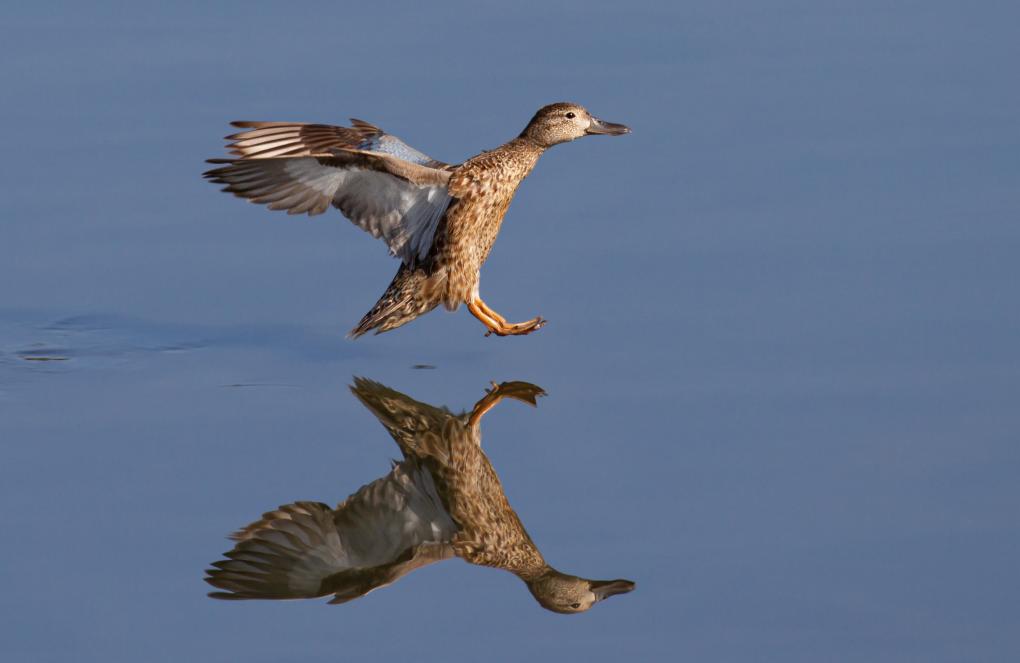 Female Cinnamon Teal coming in for a landing.
Female Cinnamon Teal coming in for a landing. 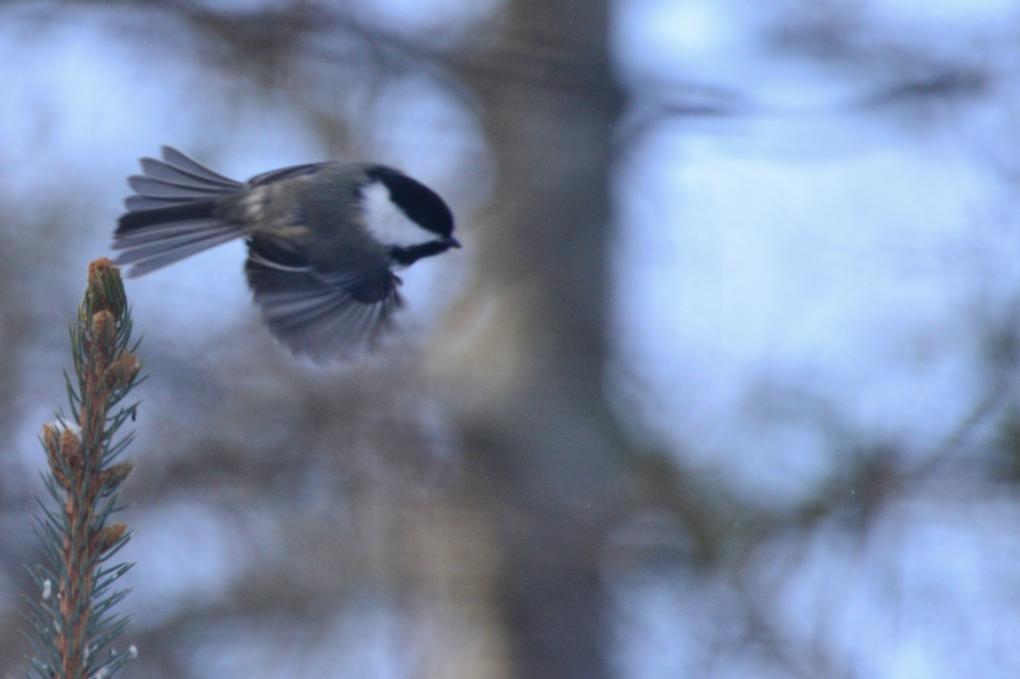
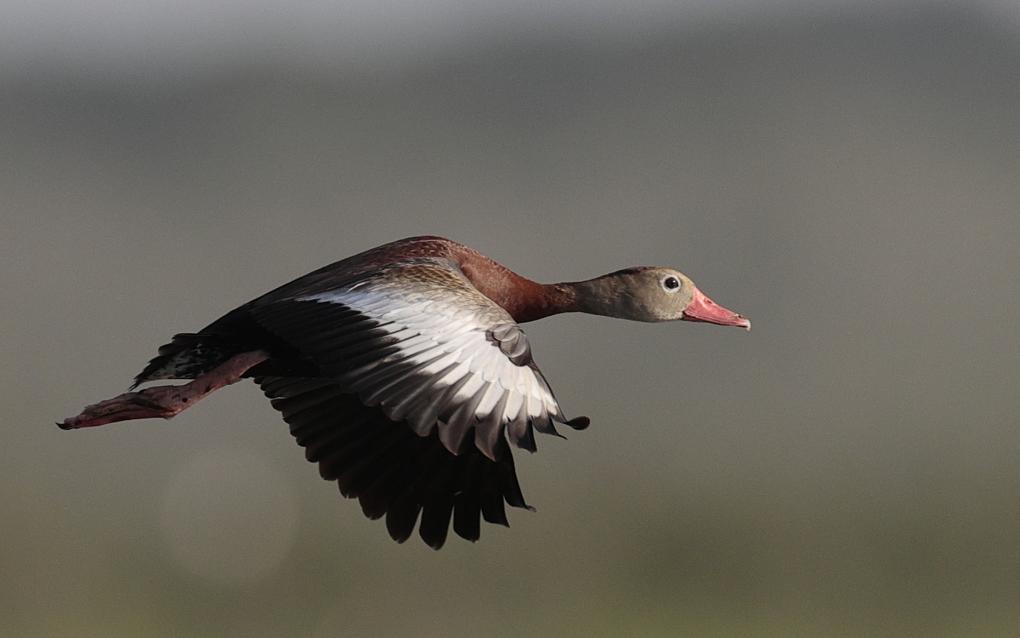
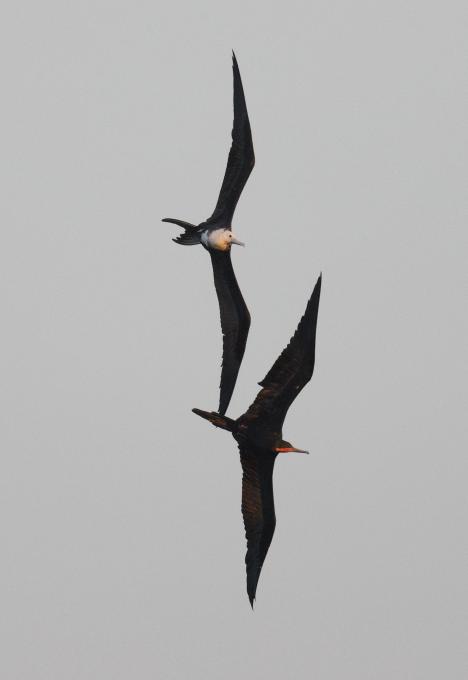
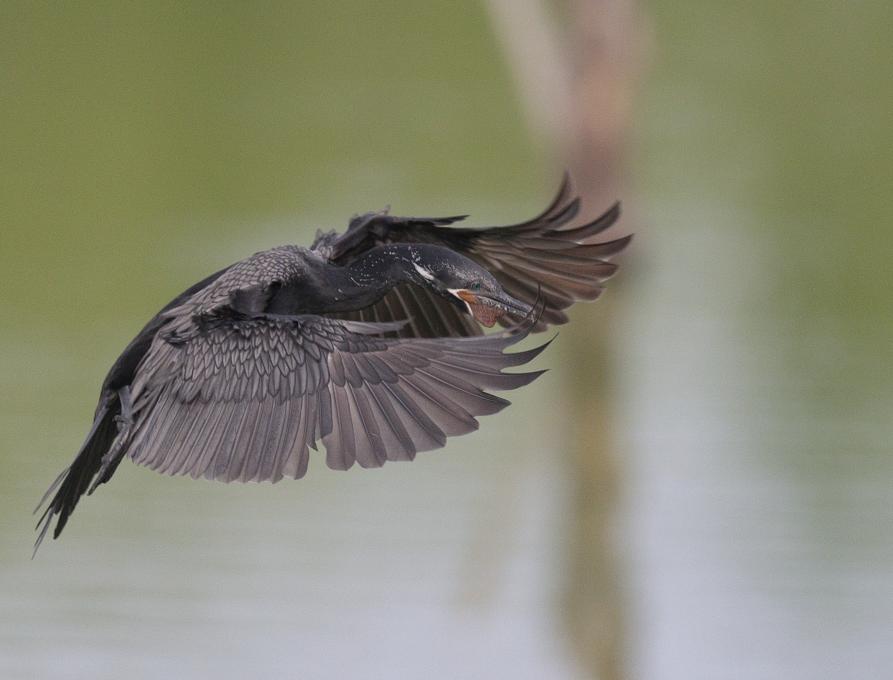
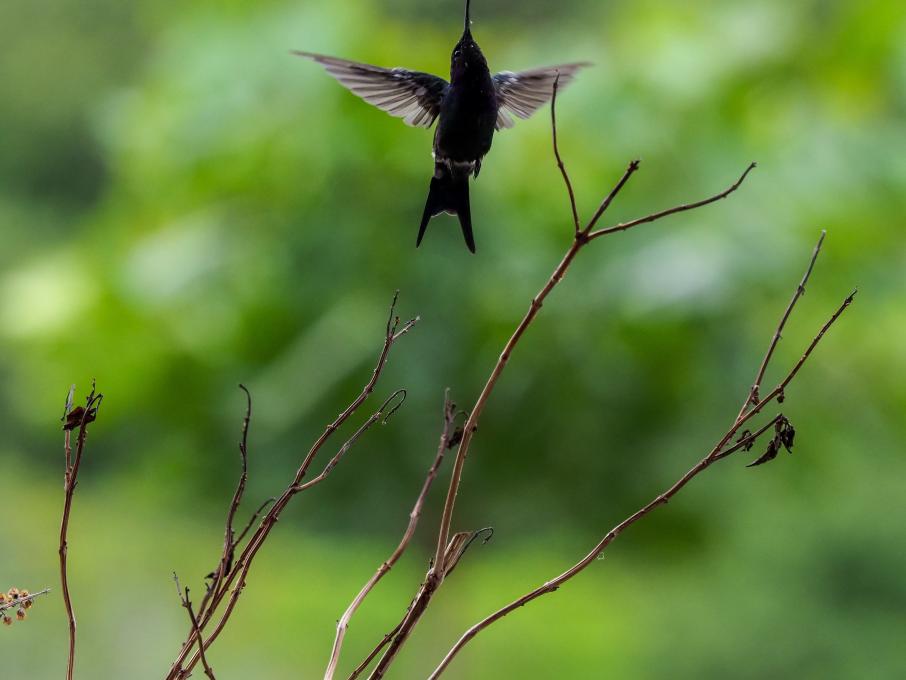
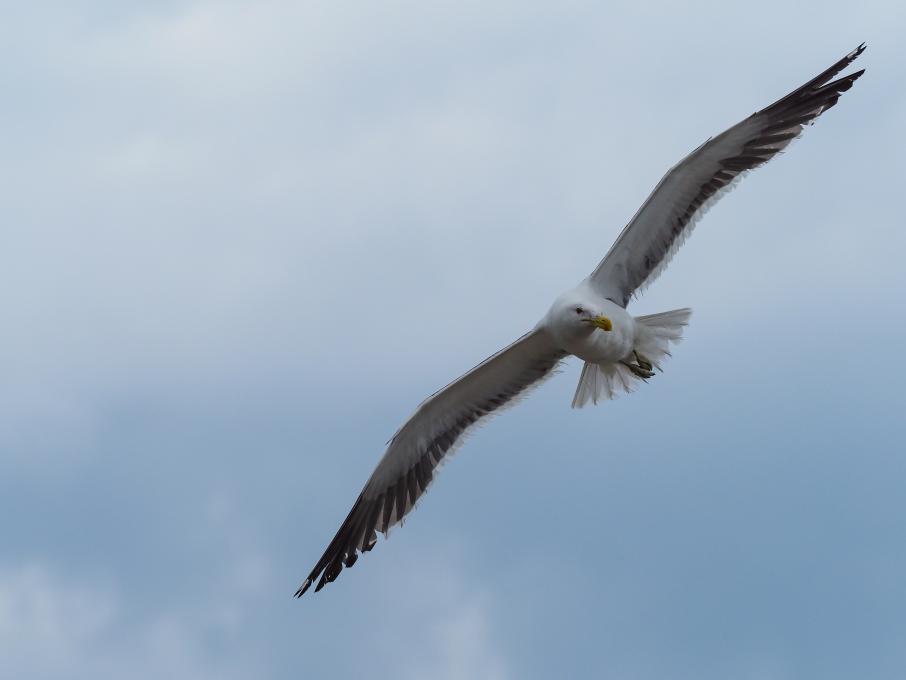
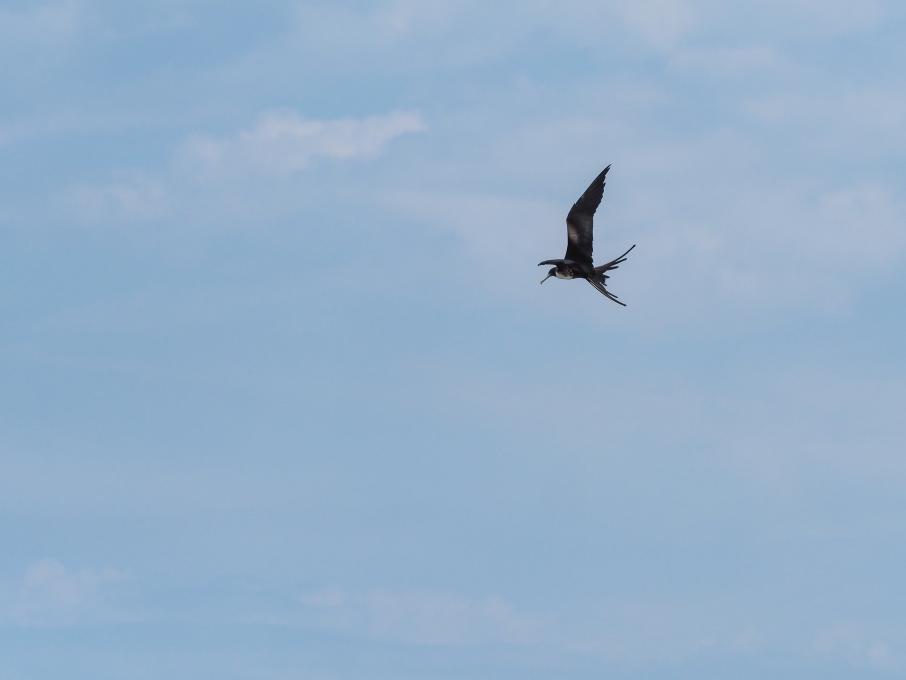
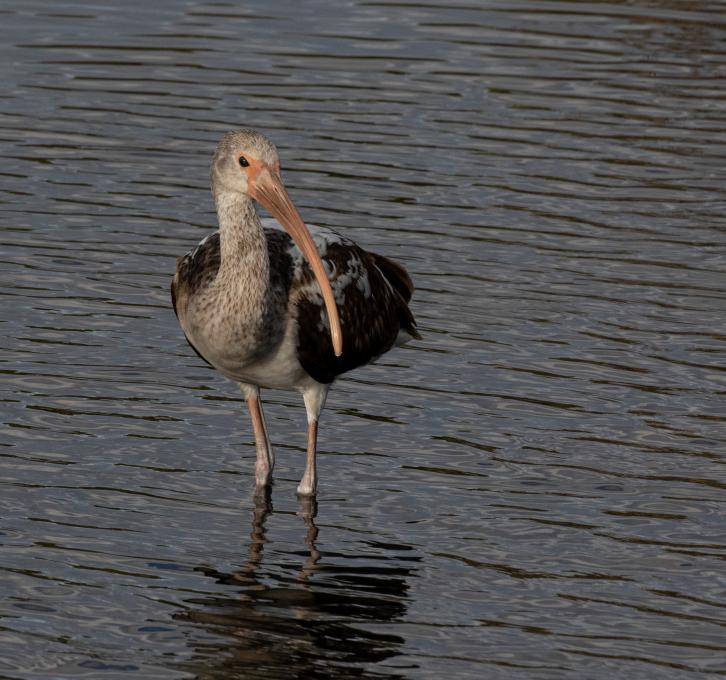
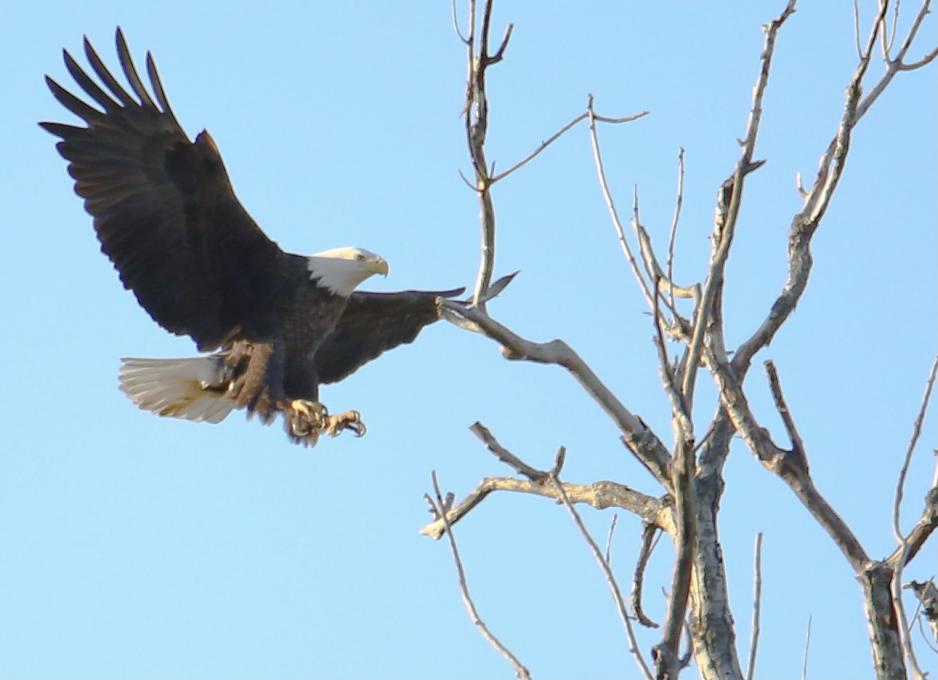
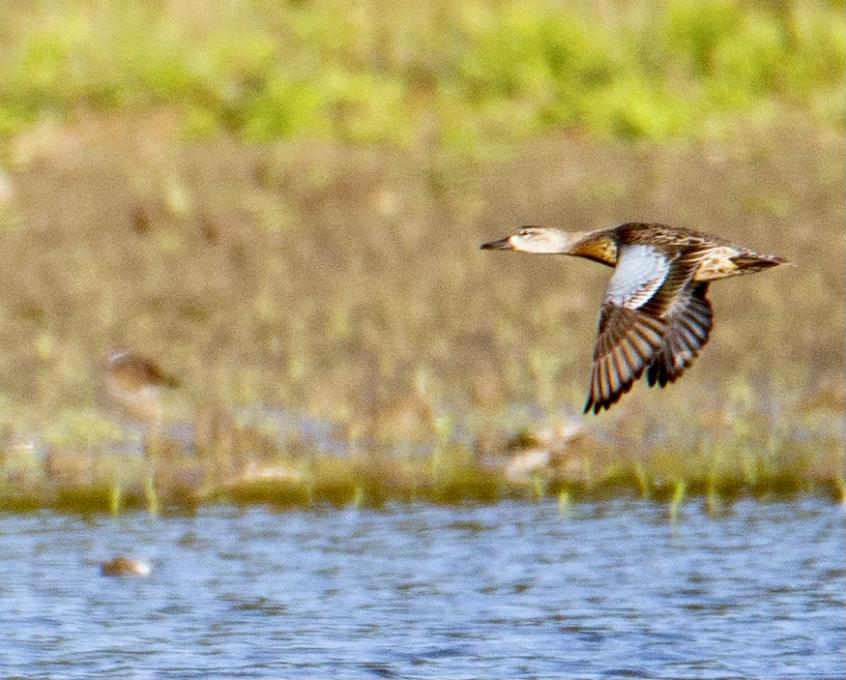
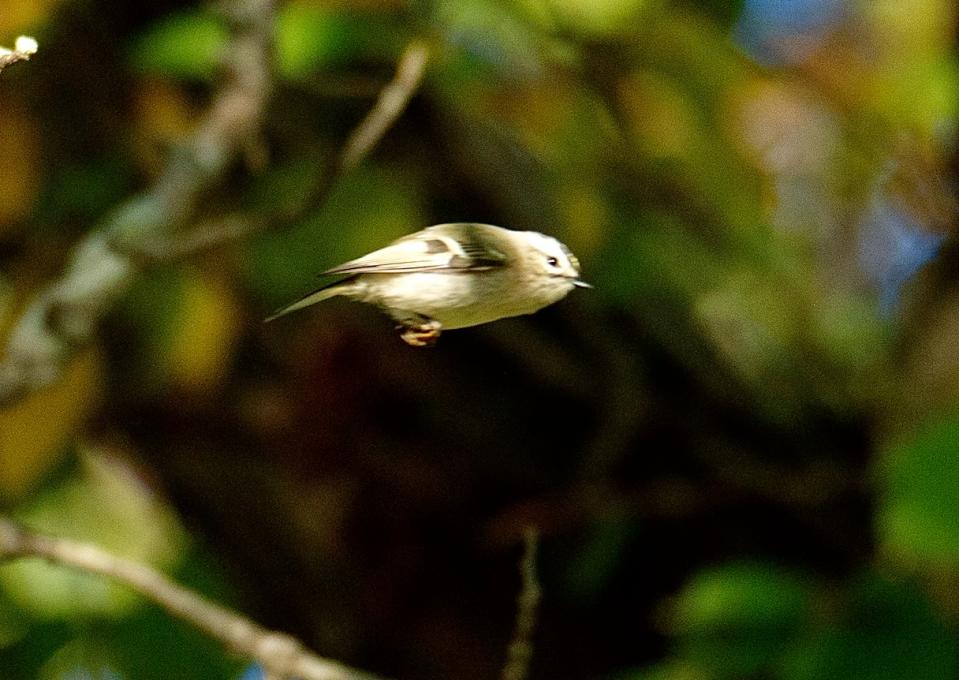 I enjoyed the video this lesson and went out and tried to capture some birds in flight. Here are a few. I think the Kinglet looks like a tiny football!
I enjoyed the video this lesson and went out and tried to capture some birds in flight. Here are a few. I think the Kinglet looks like a tiny football! 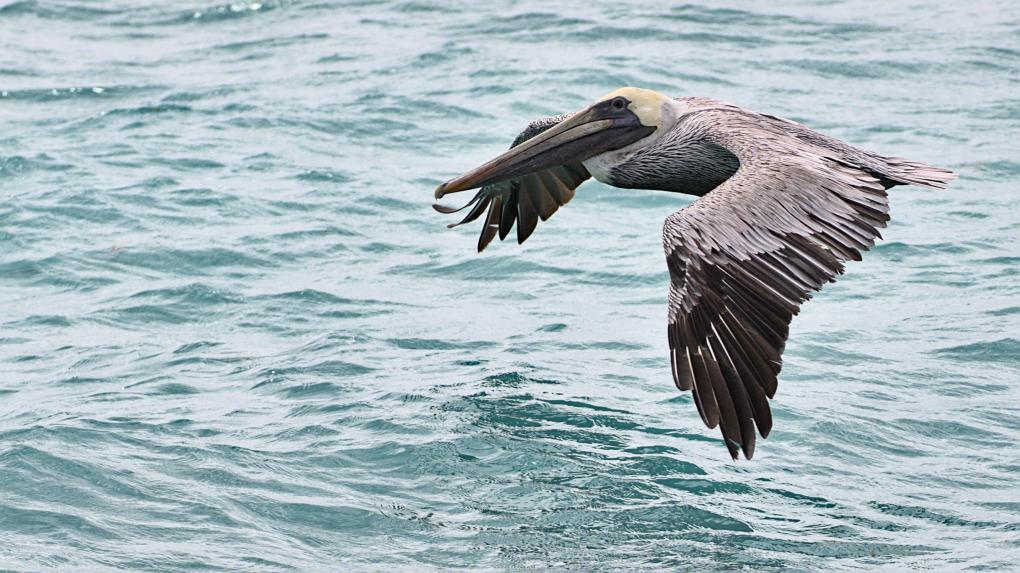 Next are the sandhill cranes, my attempt at panning in flight. I only had a few chances with this pair, and the speed here was 1/200 sec, not a deep pan of 1/30 sec. So the background isn't as streaked as it ought to be, and the wings are in the pancake position. Oh well, the birds look good and I like it anyway.
Next are the sandhill cranes, my attempt at panning in flight. I only had a few chances with this pair, and the speed here was 1/200 sec, not a deep pan of 1/30 sec. So the background isn't as streaked as it ought to be, and the wings are in the pancake position. Oh well, the birds look good and I like it anyway.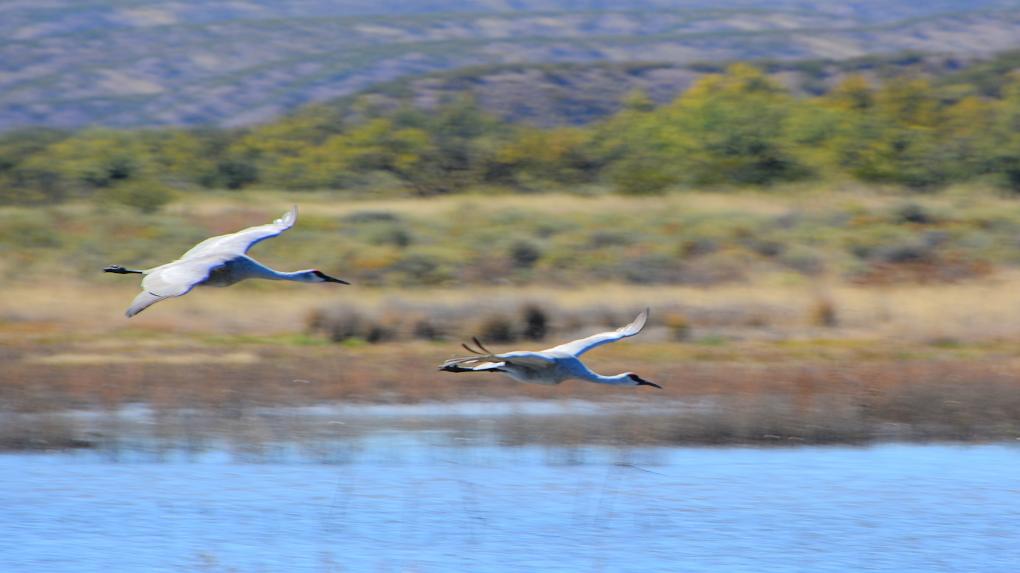 Lastly, there's this osprey named Rachel, and she's not a happy bird, because a certified bird bander has got her young'uns. He gave them back a few minutes later, with jewelry attached. I didn't use a fast enough shutter speed here, but hey, it was before I took this course!
Lastly, there's this osprey named Rachel, and she's not a happy bird, because a certified bird bander has got her young'uns. He gave them back a few minutes later, with jewelry attached. I didn't use a fast enough shutter speed here, but hey, it was before I took this course!